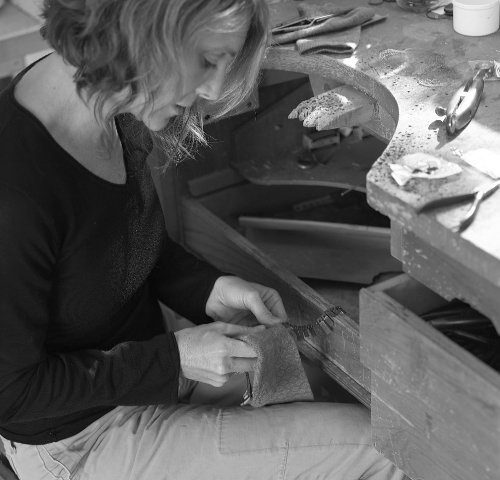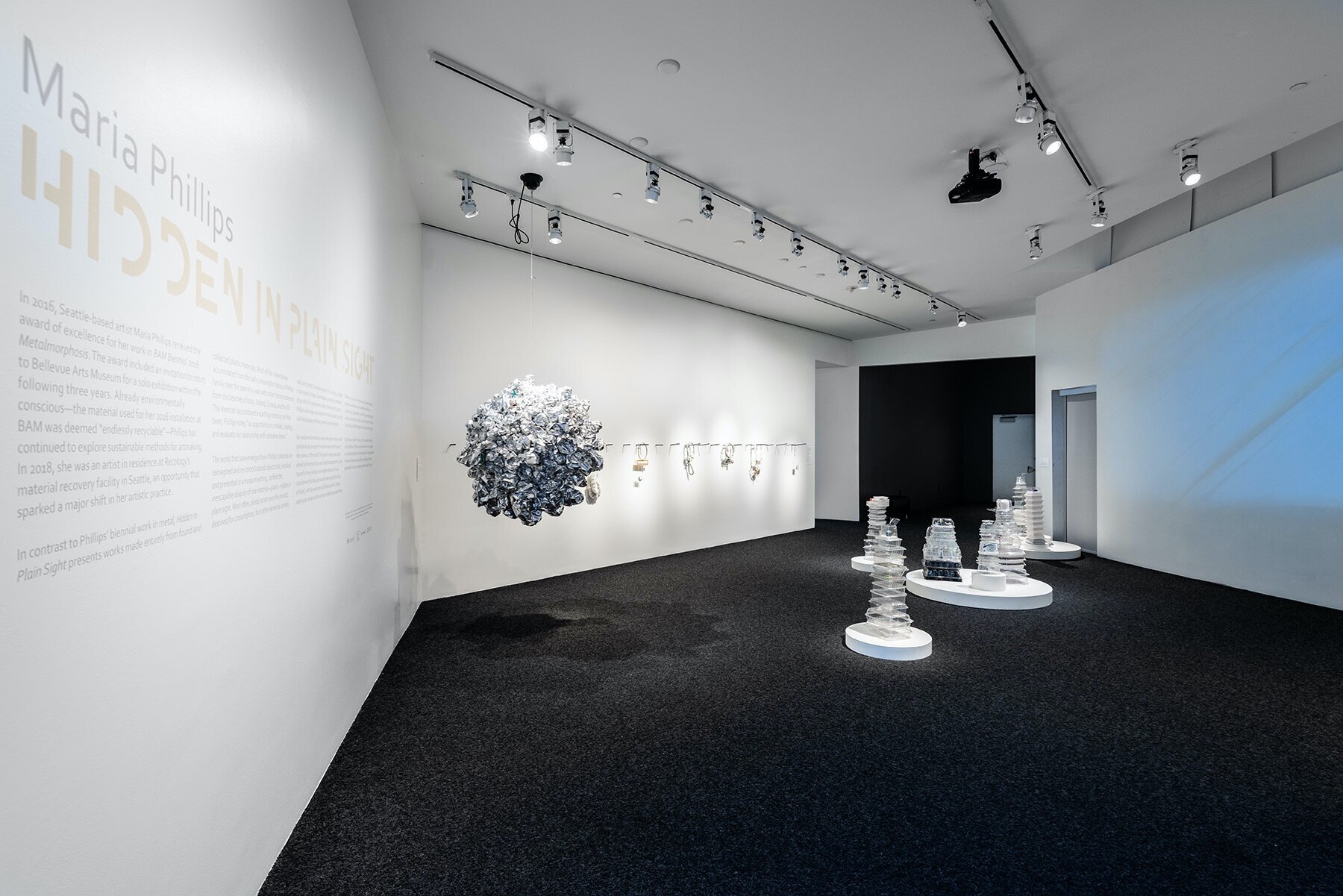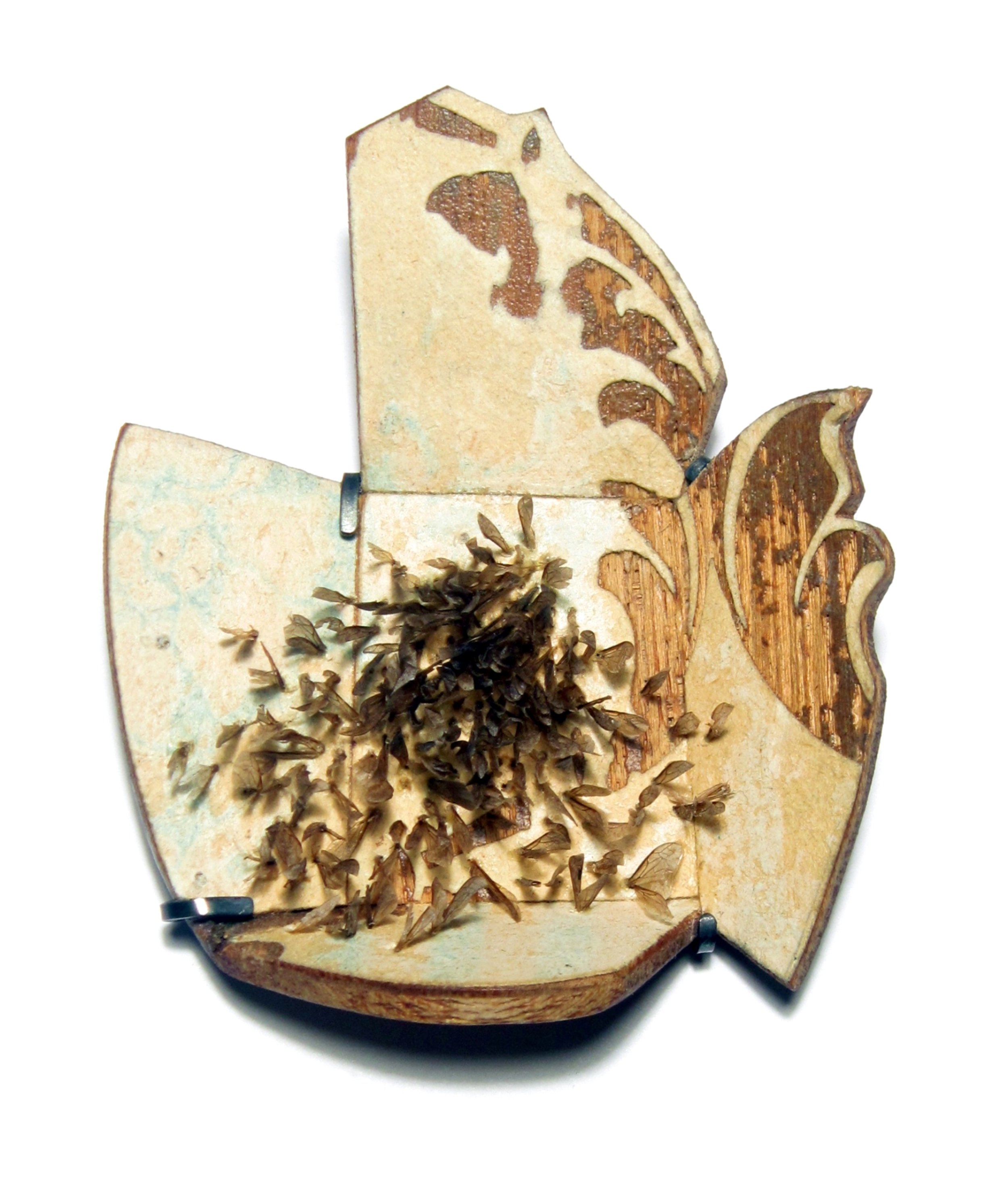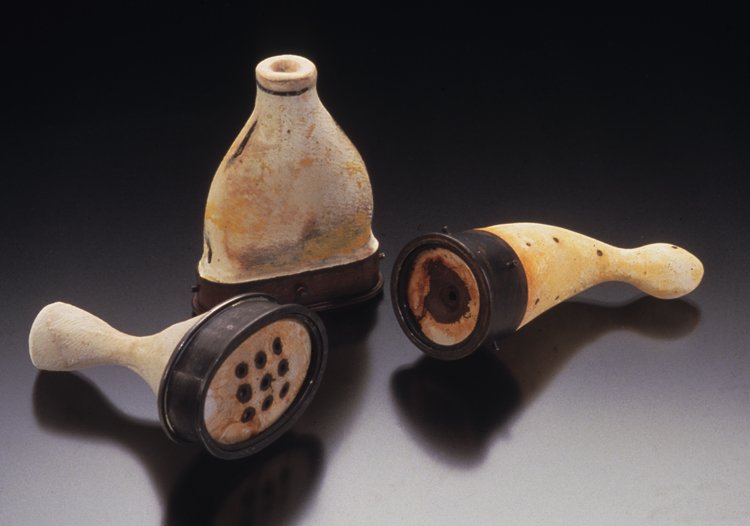Maria Phillips in her studio in Seattle, Washington.
Biography
Maria Phillips is a Seattle-based artist, educator, and Co-Manager of the Recology King County Artist in Residence Program. Her work reimagines discarded materials, exploring consumption, accumulation, and renewal cycles while challenging conventional notions of value and permanence.
Phillips earned her BA in Communication Design from Loyola University in New Orleans and her MFA in Visual Art from the University of Washington in Seattle. In addition to her studio practice, she lectures, teaches, and serves as a guest critic at institutions nationwide. Her work is in the collections of the Museum of Arts and Design in New York, the Renwick Gallery of the Smithsonian American Art Museum, the Tacoma Art Museum, Seattle University, and the Museum of Fine Arts in Boston, among other private collections.
Her work has been featured in The Art of Enameling, 1000 Rings, 500 Brooches, and The Penland Book of Jewelry, where she contributed a chapter on electroforming. In 2017, she was awarded the John and Joyce Price Award of Excellence for her work in the Bellevue Art Museum Biennial, which hosted her solo exhibition Hidden in Plain Sight. Her recent body of work, At What Point, was exhibited at 4Culture in Seattle, WA.
Since participating in the Recology residency in 2018, Phillips has deepened her commitment to climate-conscious artmaking, the exclusive use of found materials, and redefining material worth through thoughtful creation. Through her practice, she advocates for deceleration, de-growth, and a regenerative approach to materiality, fostering dialogue on sustainability and artistic responsibility.
Artist Statement
Rooted in environmental consciousness and sustainability, Maria Phillips’s practice centers on depolluting, repurposing, and utilizing materials sourced exclusively from her surroundings or remnants of daily life. In a world driven by excess and disposability, she reveals the hidden potential within discarded objects, transforming them into compositions that challenge conventional notions of value and permanence.
Each abandoned object, for Phillips, carries a record of consumption, utility, and neglect. Confronted by the overwhelming abundance of discarded materials, she perceives artifacts, histories, and possibilities. Her work reclaims these remnants, engaging in a process of renewal that mirrors natural cycles of accumulation and decay. Through repetition, pattern, and transformation, she explores the rhythms of material life, countering a culture of waste. By mimicking nature’s patterns, her work highlights the beauty and significance of the seemingly mundane.
By manipulating and recontextualizing found objects, Phillips examines sustainability and collective responsibility toward the ecosystems we inhabit. Her work scrutinizes the disparity between growing concerns over climate disruption and the continued reliance on plastics and other unsustainable materials. Rejecting excess, she advocates for de-growth, deceleration, and mindful resourcefulness. Phillips’s practice underscores that environmental viability depends on fundamentally reshaping humanity’s relationship with materiality—shifting from unchecked consumption to a circular, regenerative approach.
Since participating in Recology’s artist-in-residence program in 2018, Phillips’s relationship with waste, materials, and artistic responsibility has deepened in ways she could never have anticipated. Beyond her residency, shaping and sharing the program—while bearing witness to the artists who pass through—has become both a privilege and a responsibility. The experience fundamentally altered the trajectory of her practice and philosophy. Her commitment to climate consciousness, the exclusive use of found materials and daily by-products, and the continual questioning of disposability remains unwavering. It has reshaped not only the way she works, but also the choices she makes and the way she lives. The idea of discarding—of letting go without reckoning—feels impossible to her now. Every object, every fragment, bears the weight of a world that has abandoned it—yet value remains, possibility endures, and the whisper of an afterlife beyond landfill and incineration lingers.
Beyond material exploration, Phillips’s artistic practice is an act of stewardship, ethics, and engagement with the world. She strives to foster introspection, ignite dialogue, and encourage proactive measures toward a more sustainable existence. For her, art—like waste—is never final; it exists in a continuous state of transformation, shaped by the hands that reclaim it. Phillips’s commitment remains steadfast: to salvage, to slow down, and to redefine material worth through thoughtful creation.









